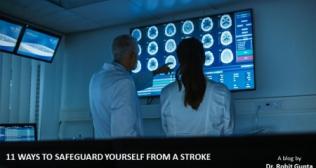
What is Dysgraphia: Symptoms, Diagnosis, and Treatment
Introduction
Dysgraphia is a complex neurological disorder affecting writing abilities, encompassing difficulties with letter formation, legibility, spacing, spelling, motor coordination, writing speed, grammar, and composition. Acquired dysgraphia arises from disruptions in established brain pathways due to events like injury or neurological conditions. Developmental dysgraphia pertains to challenges in developing writing skills despite adequate learning opportunities and cognitive potential. This blog explores the symptoms, diagnosis, and treatment options for dysgraphia.
In children, developmental dysgraphia often coexists with other learning impairments like dyslexia or attention-deficit/hyperactivity disorder. Conversely, in adults, dysgraphia may result from conditions such as stroke, brain injury, dementia, or parkinsonism.
Types of Dysgraphia
- Dyslexic Dysgraphia: Children with this type of dysgraphia create illegible written work but may be able to copy it. They typically have poor spelling skills.
- Motor Dysgraphia: Children with motor dysgraphia exhibit poor dexterity or motor tone, resulting in illegible handwriting even when copying. Letter formation requires significant effort, but spelling is usually unaffected.
- Spatial Dysgraphia: This type of dysgraphia involves difficulties with spatial comprehension, leading to irregular spacing between words and challenges in writing on a line.
- Phonologic Dysgraphia: Children with phonologic dysgraphia struggle to distinguish between nonwords and actual words. They may have a poor verbal working memory, making it difficult to sound out words accurately.
Identifying and distinguishing between these types of dysgraphia is crucial for providing appropriate treatment and support, as they can significantly impact children’s and adults’ daily activities. Effective intervention strategies tailored to the specific challenges faced by individuals with dysgraphia can help improve their writing skills and overall quality of life.
Symptoms of Dysgraphia
Dysgraphia can be present in various ways, with subtle yet impactful signs affecting written communication and motor skills. Some common symptoms include:
- Irregular letter sizes and shapes
- Unfinished words
- Improper punctuation usage
- Unusual writing tool grip
- Individuals may also experience physical discomfort or fatigue when writing and struggle with line spacing and the organization of written text
Causes of Dysgraphia
The origins of dysgraphia are multifaceted, involving a combination of neurological, physical, and environmental factors affecting fine motor skills, language processing, and memory. Some of these are as follows:
- The issue with orthographic coding leads to difficulty recalling written words and executing the motor movements required for writing.
- Injury to the left parietal lobe due to strokes or brain trauma impacts reading, writing, and sensory processing capabilities.
- Challenges in language processing and visual-spatial perception hinder the comprehension and processing of essential visual and auditory information required for writing.
Diagnosing Dysgraphia
Diagnosing dysgraphia requires a thorough evaluation by a multidisciplinary team, including educators, psychologists, and healthcare professionals. This process involves educational and psychological assessments, medical examinations, analysis of academic history, interviews with caregivers, and observations in natural settings. A comprehensive diagnosis helps reveal the development of personalized treatment plans tailored to individual needs.
- IQ Test and Academic Evaluation: These assessments are part of the diagnostic process for children and adults. They help evaluate cognitive abilities and academic performance.
- Review of Schoolwork: Analyzing specific school assignments provides insight into the individual’s writing difficulties and academic challenges.
- Written Samples: Adults may undergo evaluation based on samples of their written work or written exams administered by a healthcare professional.
- Observation: Healthcare providers observe individuals as they write to identify any delicate motor skill issues. They may also assess language processing problems by observing tasks like copying words from one source to another.
- Formalized Handwriting Evaluations: These tests measure writing speed and legibility, providing objective data on the individual’s writing abilities.
- Beery Developmental Test of Visuomotor Integration (VMI): This test assesses motor and visual skills integration, which is essential for proficient writing.
Treating Dysgraphia
A comprehensive approach is required to enhance writing skills and tackle the underlying difficulties while treating dysgraphia.
- Educational interventions, such as specialized programs or accommodations, can assist individuals with dysgraphia in academic settings.
- Occupational therapists are crucial in enhancing fine motor skills and hand-eye coordination, while speech-language pathologists focus on cognitive function and language processing.
- Psychological support may also be necessary to address the emotional well-being and self-esteem issues associated with dysgraphia.
Home Treatment and Assistive Devices
In addition to professional therapy, individuals with dysgraphia can benefit from various assistive devices and strategies at home or school. Low-tech options include pencil grips, wide-ruled notebooks, and graphic organizers, while high-tech solutions like speech-to-text software and typing programs offer advanced support. Bilateral coordination exercises like jumping jacks or hand-clapping games can also improve motor coordination and cognitive function.
Facts About Dysgraphia
Common questions about dysgraphia include inquiries about prevention, improvement with age, and its relationship to other conditions like dyslexia and ADHD.
- Identifying and intervening early is crucial in effectively managing dysgraphia and enhancing individuals’ writing abilities and overall quality of life.
- Dysgraphia stems not from intelligence or effort deficits but from challenges in processing written language and transforming it into written expression.
- Assistive devices and accommodations, such as speech-to-text software, specialized writing tools, and extra time for written assignments, can help individuals with dysgraphia overcome writing difficulties.
- Dysgraphia cannot be prevented. Early intervention and therapy can significantly improve outcomes, especially in children.
- Individuals with dysgraphia can acquire the necessary assistance and guidance to effectively cope with their difficulties and achieve academic and professional success.
Conclusion
Dysgraphia poses significant challenges to individuals of all ages, impacting daily life and learning. Dysgraphia may not improve spontaneously; however, with early detection, comprehensive evaluation, and personalized treatment approaches, individuals with dysgraphia can improve their writing skills, build assurance, and achieve academic success. By implementing educational interventions, therapeutic support, and assistive technologies, individuals with dysgraphia can navigate their learning journey with greater ease and confidence.
Popular Searches :
Hospitals: Cancer Hospital in Delhi | Best Heart Hospital in Delhi | Hospital in Amritsar | Hospital in Ludhiana | Hospitals in Mohali | Hospital in Faridabad | Hospitals in Gurgaon | Best Hospital in Jaipur | Hospitals in Greater Noida | Hospitals in Noida | Best Kidney Hospital in Kolkata | Best Hospital in Kolkata | Hospitals in Rajajinagar Bangalore | Hospitals in Richmond Road Bangalore | Hospitals in Nagarbhavi Bangalore | Hospital in Kalyan West | Hospitals in Mulund | Best Hospital in India | Gastroenterologist in Jaipur | Cardiology Hospital in India
Doctors: Dr. Rana Patir | Dr. Rajesh Benny | Dr. Rahul Bhargava | Dr. Jayant Arora | Dr. Anoop Misra | Dr. Manu Tiwari | Dr. Praveer Agarwal | Dr. Arup Ratan Dutta | Dr. Meenakshi Ahuja | Dr. Anoop Jhurani | Dr. Shivaji Basu | Dr. Subhash Jangid | Dr. Atul Mathur | Dr. Gurinder Bedi | Dr. Monika Wadhawan | Dr. Debasis Datta | Dr. Shrinivas Narayan | Dr. Praveen Gupta | Dr. Nitin Jha | Dr. Raghu Nagaraj | Dr. Ashok Seth | Dr. Sandeep Vaishya | Dr. Atul Mishra | Dr. Z S Meharwal | Dr. Ajay Bhalla | Dr. Atul Kumar Mittal | Dr. Arvind Kumar Khurana | Dr. Narayan Hulse | Dr. Samir Parikh | Dr. Amit Javed | Dr. Narayan Banerjee | Dr. Bimlesh Dhar Pandey | Dr. Arghya Chattopadhyay | Dr. G.R. Vijay Kumar | Dr Ashok Gupta | Dr. Gourdas Choudhuri | Dr. Sushrut Singh | Dr. N.C. Krishnamani | Dr. Atampreet Singh | Dr. Vivek Jawali | Dr. Sanjeev Gulati | Dr. Amite Pankaj Aggarwal | Dr. Ajay Kaul | Dr. Sunita Varma | Dr. Manoj Kumar Goel | Dr. R Muralidharan | Dr. Sushmita Roychowdhury | Dr. T.S. MAHANT | Dr. UDIPTA RAY | Dr. Aparna Jaswal | Dr. Ravul Jindal | Dr. Savyasachi Saxena | Dr. Ajay Kumar Kriplani | Dr. Nitesh Rohatgi | Dr. Anupam Jindal |
Specialities: Heart Lung Transplant | Orthopedic | Cardiology Interventional | Obstetrics & Gynaecology | Onco Radiation | Neurosurgery |



















